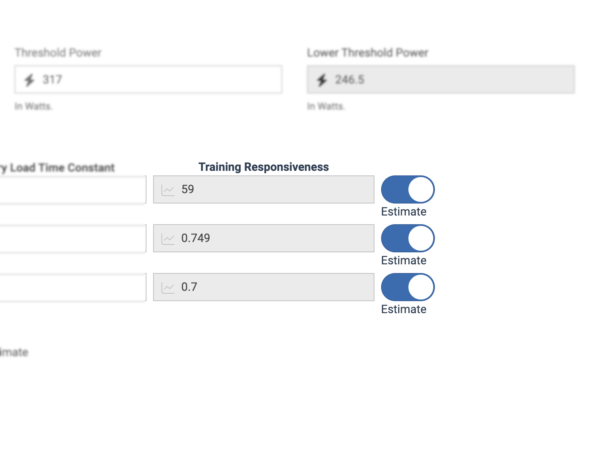
Training Responsiveness are values that represent how a specific Fitness Signature parameter changes with the associated Training Load. Xert performs a historical data regression (i.e. statistical calculation) automatically with each fitness breakthrough to estimate these values. The values are a reflection of how you personally respond to training. Higher values mean you respond more rapidly to increases in training, whereas lower values mean you may not respond so quickly. To estimate these values, the system looks back at your historical data to look for patterns.
If you have robust (i.e. accurate and complete) historical data, these numbers will more accurately reflect how you respond to training. However, if your data has errors or may not be complete, these may need to be adjusted. Click the Estimate toggle to experiment with them. For best results however, consult with Xert support (support@xertonline.com) for assistance in making changes to these values.
Generally speaking, the greater the training responsiveness value, the greater we expect to see that fitness signature parameter increase when its respective training load increases. In the example above, you can see that the training responsiveness for this athlete’s Peak Power is 59 which means that for each point of Peak Training Load, Xert predicts your Peak Power to increase by 59 Watts. This prediction is then validated and updated each time you get a breakthrough. Similarly, there are responsiveness values for High Intensity Energy and Threshold Power, shown as 0.749 and 0.7 above as examples respectively.
Training Responsiveness has been introduced in support of new features that are currently under development.